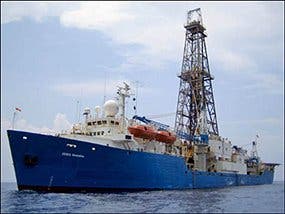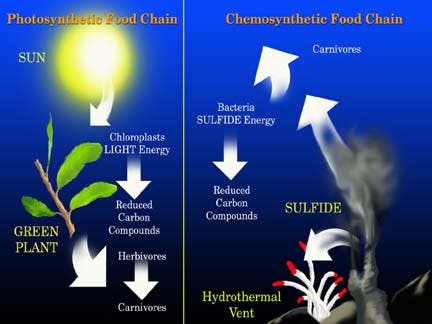For the first time in history, researchers have found microbes living deep inside Earth’s oceanic crust – the black basalts that make some 60% of our planet’s surface – potentially the largest habitat on our planet.
Engineering and microbes

They drilled through 265 metres of sediment and 300 metres of crust to collect (geologically) young basalts that were formed some through 265 metres of sediment and 300 metres of crust to collect samples which contained microbes that metabolize sulphur compounds and some that produce methane.
So how do the microbes survive down there? The key is a process called chemosynthesis; you’ve most likely heard of photosynthesis, which is the process through which plants use sunlight to gain energy. Well chemosynthesis does the same thing, but uses chemical instead of solar energy. It is basically the biological conversion of one or more carbon molecules (usually carbon dioxide or methane) and nutrients into organic matter using the oxidation of hydrogen (or other inorganic molecules). Chemosynthesis also fuels other unlikely places which harbor life, such as hydrothermal vents.
The thing is, the oceanic crust is relatively homogeneous as a habitat throughout our planet, and if you find microbes at one site, the odds are you’re gonna find them throughout its entire extent. If this is indeed the case, the crust “would be the first major ecosystem on Earth to run on chemical energy rather than sunlight”, says Mark Lever, an ecologist at Aarhus University in Denmark, who led the study.
An unlikely habitat
“This study is highly significant in that it confirms the existence of a deep-subsurface biosphere that is populated by anaerobic microorganisms,” says Kurt Konhauser, a geomicrobiologist at the University of Alberta in Edmonton, Canada.
Oceanic crust is called this way well, because it’s typically under the oceans. It is much thinner than continental crust and it is constantly formed at spreading centres on oceanic ridges. To put it this way, it’s not an oceanic crust because there is an ocean above it, there’s an ocean above it because it’s an oceanic crust. It consists of several layers, the topmost which is usually 0.5 km thick, made of basalts.
The team included scientists from six different countries. To test if the microbes were still active, the team heated the rock samples to 65 °C in water rich in chemicals found on the sea floor. Over time, more and more methane was produced, showing that the little buggers were still well and active.
Lever is convinced that the microbes are not just accidentally there, hitching a ride from someplace else – despite initial doubts.
“When I went on this expedition, I thought it would be impossible to get contamination-free samples,” he says.
He changed his opinion quickly after analyzing the samples. The team had added small amounts of marker chemicals to the fluid they used to drill for samples, but although they basically painted the outside with this fluid, the rocks were so compact that none of it reached the inside. Lever now plans to analyse fragments of crust collected from other sites in the Pacific Ocean and the north Atlantic. We’ll keep you posted with any future updates on the matter.
“Given the large volume of sub-sea-floor crust, one can’t help but wonder how the amount of living biomass there compares to that at the Earth’s surface,” says Konhauser.
Via Nature











